Photography Group
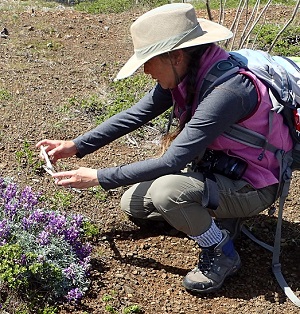 Our Photography Group is a great place to meet other native plant enthusiasts while improving your photographic skills and learning more about our native plants. It is open to all. The group has periodic meetings, photography outings and an active email list. The group has an on-going #MyPhotoOfTheWeek activity on the email list for group members to share their favorite shots with the group on a weekly basis. There is a monthly virtual meeting on zoom on the fourth Friday of each month for members to share photos and more -- everything from photography tips to organizational ideas to plant hot spots.
Our Photography Group is a great place to meet other native plant enthusiasts while improving your photographic skills and learning more about our native plants. It is open to all. The group has periodic meetings, photography outings and an active email list. The group has an on-going #MyPhotoOfTheWeek activity on the email list for group members to share their favorite shots with the group on a weekly basis. There is a monthly virtual meeting on zoom on the fourth Friday of each month for members to share photos and more -- everything from photography tips to organizational ideas to plant hot spots.
Our upcoming events can be found on Meetup and Facebook. Past events can be seen here.
To participate in our virtual activites, we recommend that you join our online discussion group.
Native Plant ID (formerly Keying with Natives)
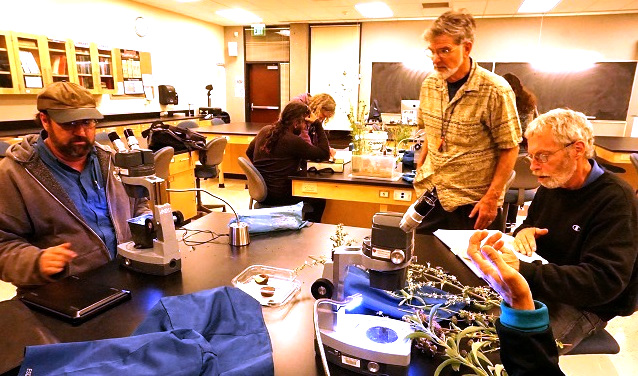
Native Plant ID (formerly Keying with Natives) is a Chapter group that works together to learn plant identification using botanical keys and other resources. Join us as we look at plant samples collected from local gardens and practice methods of identifying the native plants of our region. Bring in plant samples if you have some from property where you have permission to collect or just come and work with the materials provided. We will use a variety of plant books and online resources as we endeavor to improve our understanding of botanical terms used in plant identification. The chapter has 10x hand lenses and dissecting microscopes that we can use to look at small plant parts or bring your own lens. Also bring any of the following reference books that you have:
- The Jepson Manual, 2nd Edition, Willis Linn Jepson, available in hardcover or digital version
- Plants of the San Francisco Bay Region: Mendocino to Monterey, Third Edition, Linda H. Beidleman and Eugene N. Kozloff
- Pacific States Wildflowers, Theodare F. Niehaus and Charles L. Rippe
- A Sierra Nevada Flora, Norman F. Weeden
- Spring Wildflowers of the San Francisco Bay Region and Flora of the Mount Hamilton Range, Helen K. Sharsmith
- Wildflowers of the West, Mabel Crittenden and Dorothy Telfer
- Plant Identification Terminology, An Illustrated Glossary, by James G. Harris and Melinda Woolf Harris, 2nd Edition
Native Plant ID meets the fourth Tuesday of the month at the Peninsula Conservation Center, 3921 E Bayshore Rd, Palo Alto. Join other native plant enthusiasts in a fun and educational atmosphere, as we hone our skills at plant identification (aka “keying”). For details, contact Janet Hoffmann at This email address is being protected from spambots. You need JavaScript enabled to view it..
Additional Resources
Dee Himes (former CNPS SCV board member, Field Trip Chair, chapter Treasurer, “Weed Warrior” at Edgewood County Park and Preserve and Adjunct Instructor of horticulture at Foothill College, in their Environmental Horticulture and Design program, which she also graduated from with an A.S. in 2006) recorded two online classes that go over the basics of Plant Morphology and the basics of Plant Taxonomy. They cover the basic principles of morphology, which is the study of the form, external structure and development of plants; and the basic principles of taxonomy, which is to learn and look at different plant families. The classes are a good resource for learning the terminology of plant identification.
Additional online resources:
Keying With Natives

Keying With Natives is a Chapter group that promotes plant identification training using botanical keys. Join us as we learn and practice methods of identifying the native plants of our region. From beginners to more advanced, there are challenges for all. Bring in plant samples if you have some or just come and work with the materials provided. We primarily use Jepson Manual, 2nd edition, so please bring yours if you have a copy. Other plant books are welcome as well, and we often practice keying with them. Botanical microscopes are available.
Keying With Natives Lectures
Two online classes go over the basics of Plant Morphology and the basics of Plant Taxonomy. They cover the basic principles of morphology, which is the study of the form, external structure and development of plants; and the basic principles of taxonomy, which is to learn and look at different plant families. The classes form a great crash course for beginners who are enthusiastic about learning how and why some plants are named ̶ and for others they’ll form a refresher. By knowing the basic morphological characteristics of plants, a plant’s name will become obvious. Once the plant has been identified, it can be placed within categories, a plant family, a classification system that is part of plant taxonomy.
Dee recommends these resources for this class: Plant Identification Terminology, An Illustrated Glossary, by James G. Harris and Melinda Woolf Harris, 2nd Edition; https://vplants.org/portal/plants/glossary/index.php; cuttings of your favorite native plants from your garden as samples; and a hand lens.
Dee Himes is a CNPS SCV board member, Field Trip Chair, and former chapter Treasurer (2012-2014) and Field Chair (2014-2018). She is also an active “Weed Warrior” at Edgewood County Park and Preserve. She is now an Adjunct Instructor of horticulture at Foothill College, in their Environmental Horticulture and Design program, which she also graduated from with an A.S. in 2006. Dee is passionate about sharing her landscape and horticultural experiences and expertise in caring for California native gardens that includes sustainable gardening practices.
When health regulations allow, Keying With Natives meets the last Friday of the month at the Peninsula Conservation Center, 3921 E Bayshore Rd, Palo Alto. Join other native plant enthusiasts in a fun and educational atmosphere, as we hone our skills at plant identification (aka “keying”). For details, contact Joe Cernac atThis email address is being protected from spambots. You need JavaScript enabled to view it..
Seed Packet Information: Hills of California
Hills of California
We hope you enjoy your seeds from the CNPS SCV Wildflower Ambassadors program. This plant mix is designed to provide flowers over a period of three months in the spring and early summer in a sunny area.
Planting Instructions
Fall through winter is the ideal time to start growing California native wildflowers as these have adapted to capitalize on the fall and winter rains (October-February is best) and bloom in spring. They may be planted through April, but after that it is best to wait until at least September to plant them as they do not do well when planted in late spring or summer.
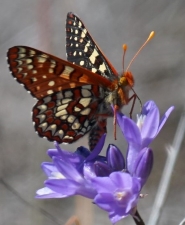 Choose A Site & Prepare Your Soil
Choose A Site & Prepare Your Soil
- Choose a spacious site in full sun.
- Prepare your soil (or several very large pots), by removing all existing growth and debris. If your soil is clay, break it up with some compost or cactus soil (sold at nurseries).
- Water thoroughly to help seeds settle into the soil. Continue to water a few times a week, unless it rains, so they don’t dry out after germinating. Seeds should sprout in one to three weeks.
- After you plant your seeds, let the area ‘go natural’ by leaving the leaf litter on the ground. While many butterflies go into chrysalis on stems or other hard surfaces like branches, many others go into chrysalis in the debris. If you rake or blow it, you could accidentally kill or throw them away.
Avoid using pesticides anywhere in your garden, it will kill the beneficial insects such as bees, butterflies, moths, and ladybugs that you are trying to attract. Try to ignore bugs, as they are part of the ecosystem (for instance, hummingbirds eat aphids). If you hose the plant or try to remove pests you may dislodge butterfly or ladybug eggs or kill tiny caterpillars. Avoid using herbicides as they also poison the ecosystem you are trying to nurture.
Plants In The Hills Of California Mix
- Farewell to Spring, Clarkia amoena (hosts White Lined Sphinx Moth, Clark’s Day Sphinx Moth)
- Mountain Garland, Clarkia unguiculata (hosts White Lined Sphinx Moth, Clark’s Day Sphinx Moth)
- Chinese Houses, Collinsia heterophylla (hosts Variable Checkerspot)
- California Poppy, Eschscholzia californica (useful to pollinators, hosts Acmon Blue, Dotted Blue, Mormon Metalmark, etc.)
- Globe Gilia, Gilia capitata (host to Fairy Longhorn Moth)
- Goldfields, Lasthenia glabrata (hosts Small Heliothodes Moth)
- Tidy Tips, Layia platyglossa (hosts Small Heliothodes Moth)
- Blue Flax, Linum lewisii (hosts Variegated Fritillary)
- Miniature Lupine, Lupinus bicolor (hosts Painted Lady, Acmon Blue, Gray Hairstreak)
- Sky Lupine, Lupinus nanus (hosts Orange Sulphur, Painted Lady, Acmon Blue, Gray Hairstreak)
- Arroyo Lupine, Lupinus succulentus (hosts West Coast Lady, Painted Lady, Acmon Blue, Gray Hairstreak)
- Five Spot, Nemophila maculate (hosts Funereal Duskywing)
- Baby Blue-Eyes, Nemophila menziesii (hosts Owlet Moth)
- Lacy Phacelia, Phacelia tanacetifolila – (hosts Bilobed Looper Moth, beloved by bees)
The list of moths and butterflies hosted by these plants is just a sample, these plants are a host to many more - a comprehensive list of butterflies each plant hosts, and details about the plants and butterflies, can be found at Calscape.org
*”Host” = key food source for the caterpillars of these particular butterflies, that co-evolved to specialize over thousands of years. Butterflies die out without these plants.
Seed Packet Information: California Shady Wildflower Mix
California Shady Wildflower Mix
We hope you enjoy your seeds from the CNPS SCV Wildflower Ambassadors program. This plant mix is designed to provide flowers over a period of three months in the spring and early summer in a shady area.
Planting Instructions
Fall through winter is the ideal time to start growing California native wildflowers as these have adapted to capitalize on the fall and winter rains (October-February is best) and bloom in spring. They may be planted through April, but after that it is best to wait until at least September to plant them as they do not do well when planted in late spring or summer.
 Choose A Site & Prepare Your Soil
Choose A Site & Prepare Your Soil
- Choose a spacious site in full sun.
- Prepare your soil (or several very large pots), by removing all existing growth and debris. If your soil is clay, break it up with some compost or cactus soil (sold at nurseries).
- Water thoroughly to help seeds settle into the soil. Continue to water a few times a week, unless it rains, so they don’t dry out after germinating. Seeds should sprout in one to three weeks.
- After you plant your seeds, let the area ‘go natural’ by leaving the leaf litter on the ground. While many butterflies go into chrysalis on stems or other hard surfaces like branches, many others go into chrysalis in the debris. If you rake or blow it, you could accidentally kill or throw them away.
Avoid using pesticides anywhere in your garden, it will kill the beneficial insects such as bees, butterflies, moths, and ladybugs that you are trying to attract. Try to ignore bugs, as they are part of the ecosystem (for instance, hummingbirds eat aphids). If you hose the plant or try to remove pests you may dislodge butterfly or ladybug eggs or kill tiny caterpillars. Avoid using herbicides as they also poison the ecosystem you are trying to nurture.
Plants In The California Shady Wildflower Mix
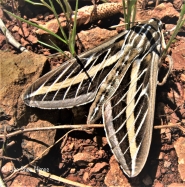
- Mountain Garland, Clarkia unguiculata (hosts Clark's Day Sphinx Moth)
- Chinese Houses, Collinsia heterophylla (hosts Variable Checkerspot)
- Baby Blue-Eyes, Nemophila menziesii (hosts Owlet Moth)
- Five Spot, Nemophila maculate (hosts Alfalfa Looper Moth)
- Farewell to Spring, Clarkia amoena (hosts White Lined Sphinx Moth)
- Punchbowl Godetia, Clarkia bottae (hosts Mariposa Forester)
- Bird’s Eye Gilia, Gilia tricolor (hosts Spotted Sun Straw Moth)
- Grand Linanthus, Linanthus grandifloras (hosts Buckwheat Borer Moth)
The list of moths and butterflies hosted by these plants is just a sample, these plants are a host to many more - a comprehensive list of butterflies each plant hosts, and details about the plants and butterflies, can be found at Calscape.org
*”Host” = key food source for the caterpillars of these particular butterflies, that co-evolved to specialize over thousands of years. Butterflies die out without these plants.
 Our Photography Group is a great place to meet other native plant enthusiasts while improving your photographic skills and learning more about our native plants. It is open to all. The group has periodic meetings, photography outings and an active email list. The group has an on-going #MyPhotoOfTheWeek activity on the email list for group members to share their favorite shots with the group on a weekly basis. There is a monthly virtual meeting on zoom on the fourth Friday of each month for members to share photos and more -- everything from photography tips to organizational ideas to plant hot spots.
Our Photography Group is a great place to meet other native plant enthusiasts while improving your photographic skills and learning more about our native plants. It is open to all. The group has periodic meetings, photography outings and an active email list. The group has an on-going #MyPhotoOfTheWeek activity on the email list for group members to share their favorite shots with the group on a weekly basis. There is a monthly virtual meeting on zoom on the fourth Friday of each month for members to share photos and more -- everything from photography tips to organizational ideas to plant hot spots.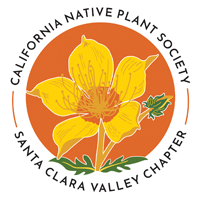


 Choose A Site & Prepare Your Soil
Choose A Site & Prepare Your Soil